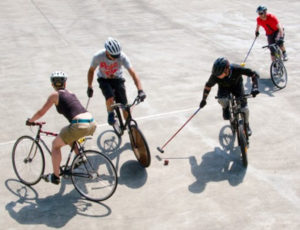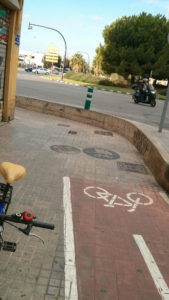Cycling itself is a way to practice sport. Cyclists have been ridden from important races like the Tour of France to local, unofficial ones for ages. Again, cyclist is not only a sport but a source of additional ideas by mixing it with existing ones. One of them is the bike polo also known as cycle polo. In essence, it consists in practicing polo but on a bike instead of on a horse. Bike polo can be practiced on grass and in a hardcourt, being this last one the most popular. The interest on this sport has been increasing across the world since 2007.
How can I play bike polo? Well, the rules vary by city. In general, every team is composed by 3 members who are not substituted. Thus, every member remains on the court at all times. A street hockey ball is used and matches are played until one team scores 5 points. One match can also last until time expires if any team does not score the 5 points. Every tournament has a play limit, for instance 10 minutes, and this figure is used to maximize the number of rounds during the very day.
In regards of the rules, bike polo has 3 rules:
- Every time a player touches the ball with a foot, that player ride to mid-court and hit a designated area with their mallet (the stick). Conveniently, there is usually a tap-out located on either side of the court.
- To score one point, the offensive player must hit the ball across the goal line using the narrow end of the mallet.
- Once a team scores a goal, you wait back in your end for the other team to cross half before engaging in play again.
The international bicycle polo championship has been won by India, Canada and the USA. Moreover, France is a world power. In this kind of tournaments sometimes the bicycles used and the money raised are donated to local schools and social clubs, and the money is used for charity, in comparison with what happens in some other sports.


